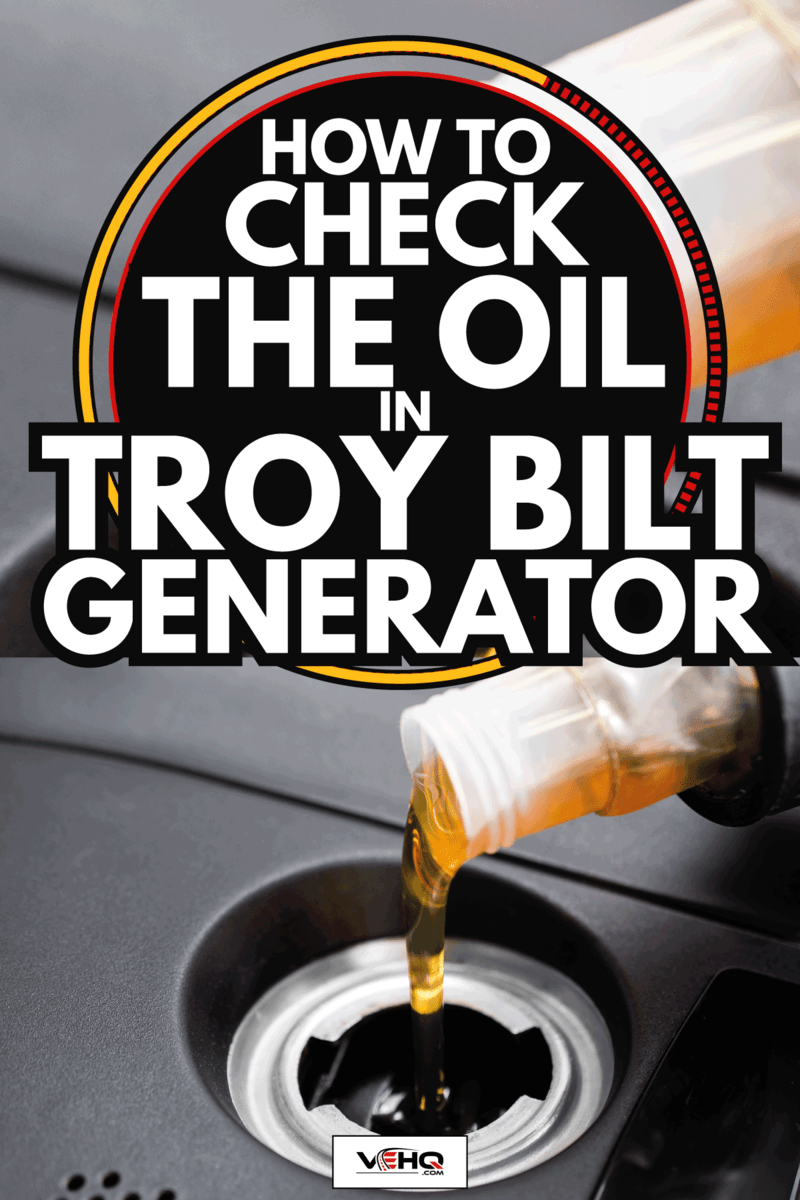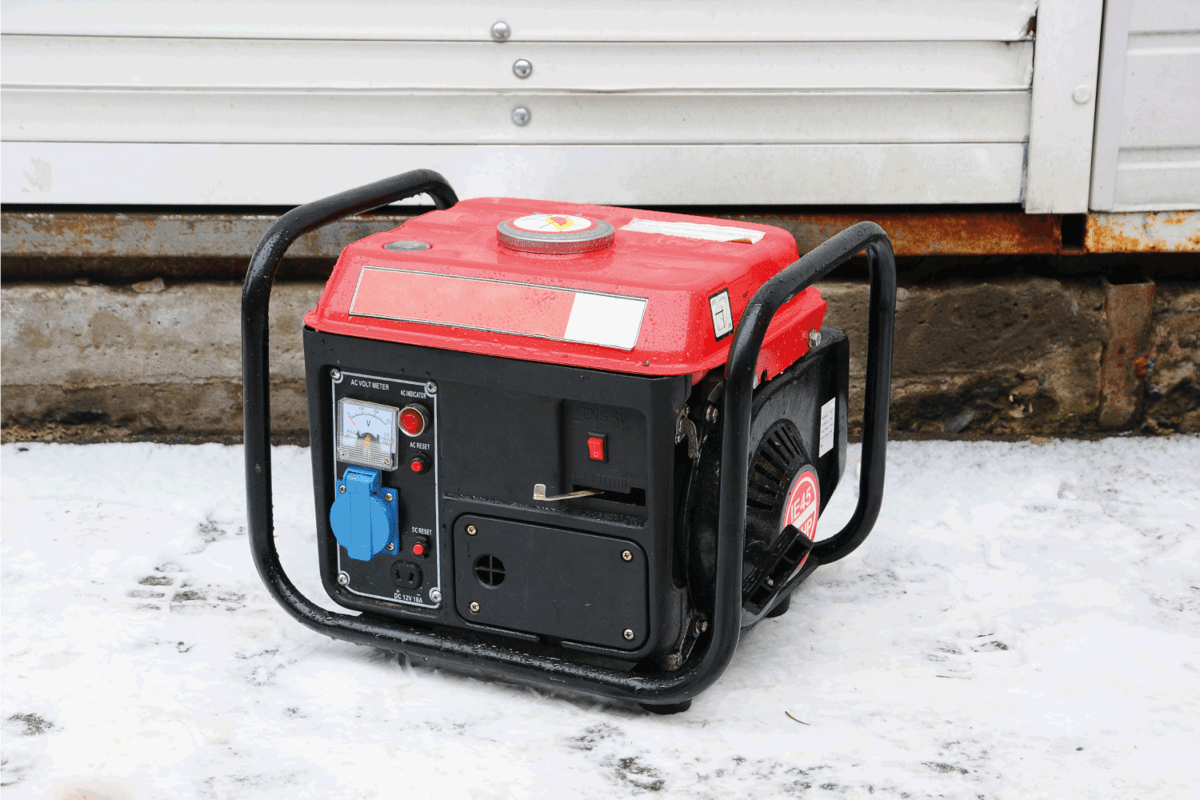If you're still learning the basics of generator maintenance, one thing that comes up over and over is checking the oil. This should be frequent—most manuals and sources expect you to check the oil before each and every use! So clearly, one of the first basic steps of taking care of a generator is recurrent oil checks. How do you check the oil in a Troy Bilt generator? You're in luck because we've found the answer!
You can check the oil in a Troy Bilt generator with only a few simple steps. It's much like checking the oil in any similar 4-cycle engine. Follow these steps:
- Make sure the generator is on level ground for an accurate reading.
- Remove the dipstick, usually attached to the yellow refill oil cap.
- Wipe off the dipstick, cleaning stray oil off before attempting to read it.
- Reinsert the dipstick in the oil reservoir.
- Pull the dipstick out once again, reading at the last level where the dipstick is completely covered in oil.
Read further to learn more. We'll show you exactly where to find the oil reservoir and when to add oil. This article also explains when the oil needs drained and changed and shows you how to do it yourself. Next, it covers the different kinds of oil and what kind you should use in your generator. And finally, we'll explain what happens if your generator runs out of oil—and just why you need to check the levels so regularly!

How To Check The Oil
It's rare to find a generator that isn't a 4-cycle engine. The other option is 2-cycle, but this is mostly found in very old marine generators.
Luckily, many other engines are also 4-cycle, as it's the most common kind of internal combustion engine. This means learning to check the oil won't be too hard—you may already know more than you think if you've ever checked the oil on any other engine before.
Occasionally, a generator model may not have a dipstick. Instead, some generators use what are called sight plugs. This is a removable, threaded cap at the base of the engine.
If you're filling a generator that has a sight plug, simply put oil in until it reaches the top threads where the plug goes. There are no levels to check—just fill it all the way, refilling as needed.
This video shows a Troy Bilt model that uses a sight plug and demonstrates filling the oil:
Where Is The Oil On A Generator?
In most cases, you can find the oil reservoir with a bright yellow cap on top. It's typically either on top of or beside the generator's engine.
Alternatively, sometimes the hole that is used for draining the oil is also the fill hole. If it doesn't have the handy screw-off yellow cap, you might need to use a socket wrench instead.
When Should I Add Oil To My Generator?
Most generators have a range marked on their dipstick—there's both a low level and a high level. Anything that falls in this normal range lets the generator run normally.
However, keep in mind that the oil level will go down as the generator runs. For this reason, try to keep the oil as close to the high level demarcation as possible—but don't overfill!
Too much oil can spread through the engine in places it doesn't belong. This can prematurely wear down and ruin parts and even make the engine smoke.
When Should I Change The Oil In My Generator?

How often you change the oil in your generator depends on several factors.
For example, there's a difference between a gas or diesel generator. There are also different sizes—is this a small portable generator or a large whole-home one? Natural variation between different brands also plays a role.
Typically, you calculate for the next oil change by counting the number of hours the generator has run. For example, a small generator might need an oil change after 50 hours of use. A larger one can go as much as one or two hundred hours.
It doesn't matter if it takes a week or a month to reach that run time. The only exception is if the generator is going to be put away for the season. If it's going to be out of use for a while, most manufacturers suggest draining the oil for storage.
Every generator is slightly different, so you'll have to check your manual for your model's runtime. For example, the Troybilt 5550 needs to be drained and refilled every 100 hours. The Honda EV 4000 suggests every 200 hours.
How Do You Remove Old Oil From A Generator?
- Let the generator run for a few minutes. This warms up the oil, making it easier to drain.
- Set the generator up on blocks or other safely stabilized elevation. Set the generator high enough to be able to put a pan underneath to catch the oil.
- Remove the oil drain plug. This is usually a bolt somewhere near the bottom of the engine. Use a socket wrench to remove the bolt.
- Let the oil drain out into the pan. Careful, it may be hot!
- Replace the oil drain plug.
- Add new oil, checking the level with the dipstick.
What Kind Of Oil Do You Put In A Troy Bilt Generator?
Since Troy Bilt generators use a Briggs and Stratton motor, they recommend using Briggs and Stratton motor oil. But almost any motor oil will work, as long as it's the right thickness.
This depends on the weather temperature where you'll be running the generator. For example, SAE 30 oil is a popular one in temperate weather. But it's only for warmer temperatures—do not use it under 40 degrees Fahrenheit.
On the other hand, 5W30 is great in cold climates and useful in 40 degrees and below temperatures. Also, 10W-30 works at a wide range of temperatures, good for 0-100 degrees Fahrenheit.
Synthetic 5W-30 is even more flexible, working between -20 degrees and 120 degrees.
Troy Bilt recommends using high-quality detergent oil, classified as SF, SG, SH, SJ, or higher. Do not mix any special additives into the oil, and do not mix oil and gasoline together. Be sure to check your manual for any other specific instructions or limitations.

What Happens When A Generator Runs Out Of Oil?
Most newer models have an automatic shut-off when the oil gets too low. A sensor reads oil levels, killing the engine when the oil reaches a critical level. This prevents damage to the engine.
If a generator continues to run with low oil, it can cause premature wear and tear on engine parts. This can even cause parts to fail or break.
Both high and low oil levels are critical problems—check your oil level regularly. If oil is low, add more immediately—don't put it off and risk running the generator with low or no oil.

In Closing
Most generators have a 4-cycle engine, which is a very popular engine for other equipment as well. This means that checking the oil is just as easy as checking the oil in any similar, 4-cycle engine.
Simply find the oil fill cap, and locate the dipstick, usually attached inside the cap. Wipe it off, clearing any loose oil. Reinsert the dipstick in the oil reservoir, and remove it again. Read the level where oil fully coats the dipstick.
Always add oil as needed to keep the oil level close to full, but don't go over. Too much oil is just as bad as not enough—either situation can damage the engine.
Change the oil at the interval indicated in the user's manual—it varies wildly, with generators commonly ranging between 50-200 hours. Use the correct oil for the temperature and according to your manual, and don't add any additives to the oil.
If you enjoyed this article, try reading:
